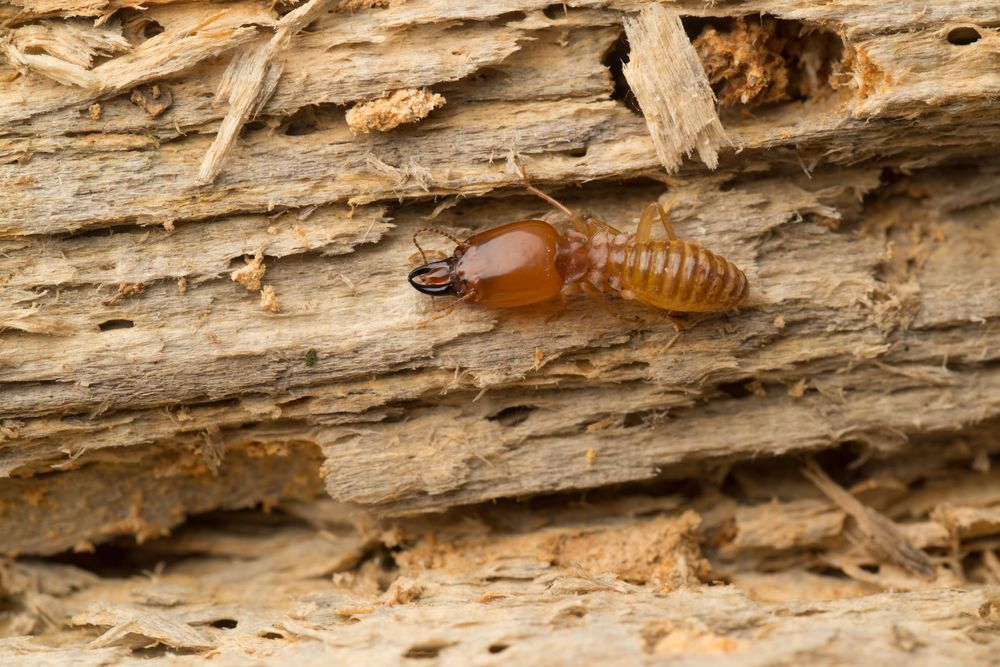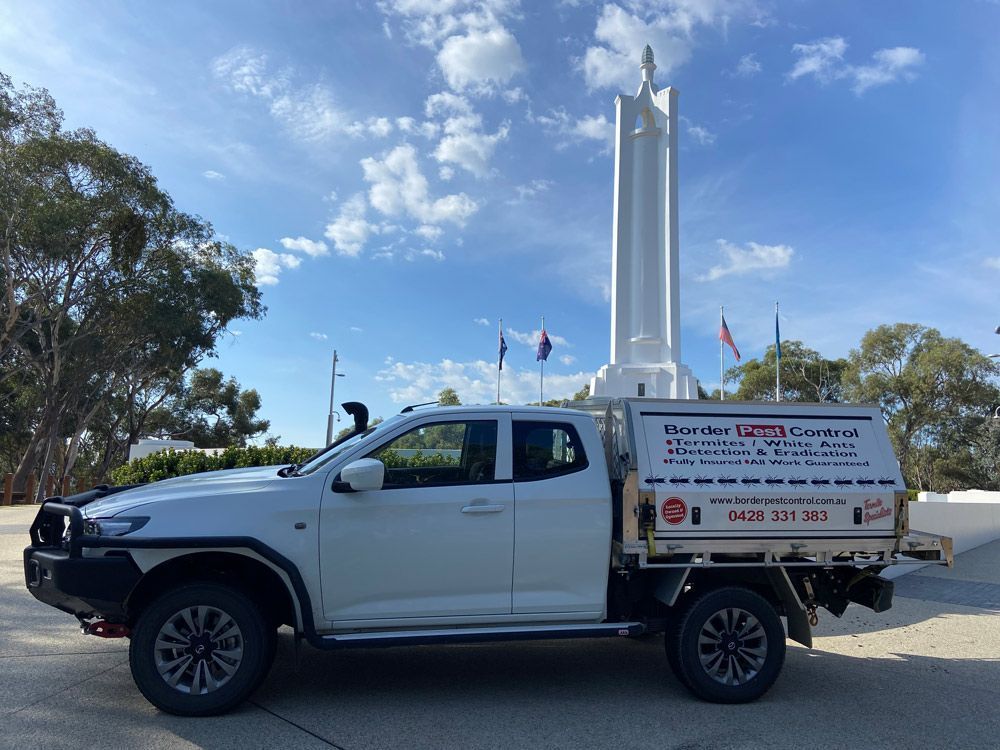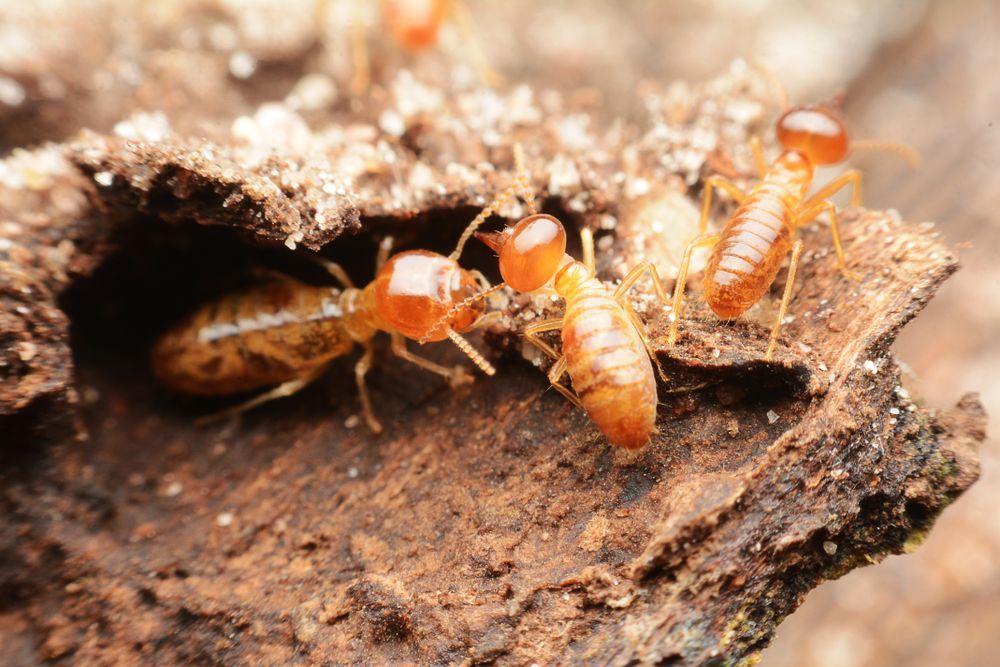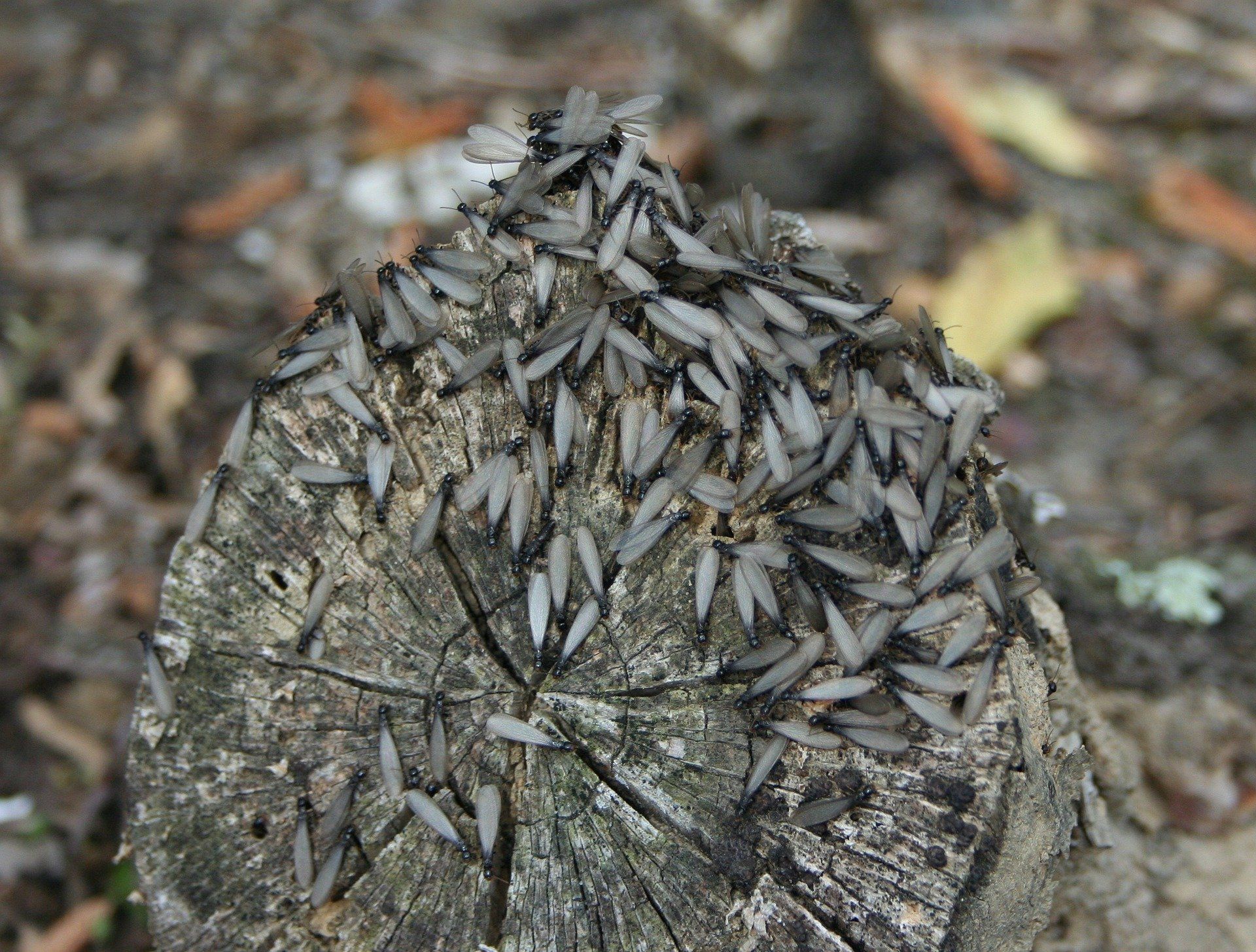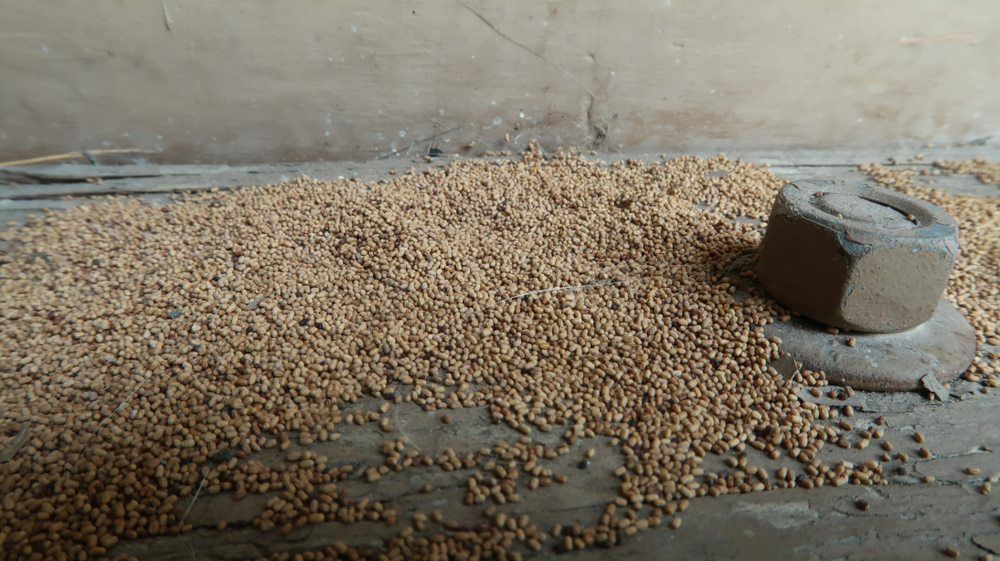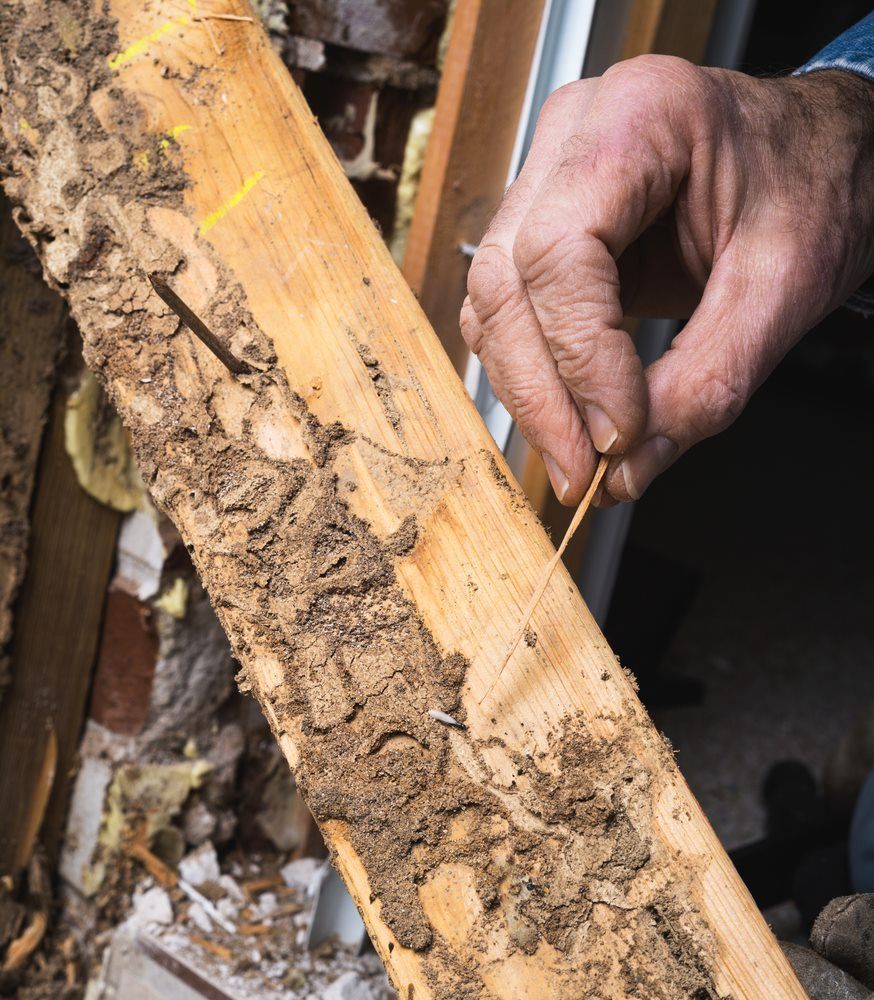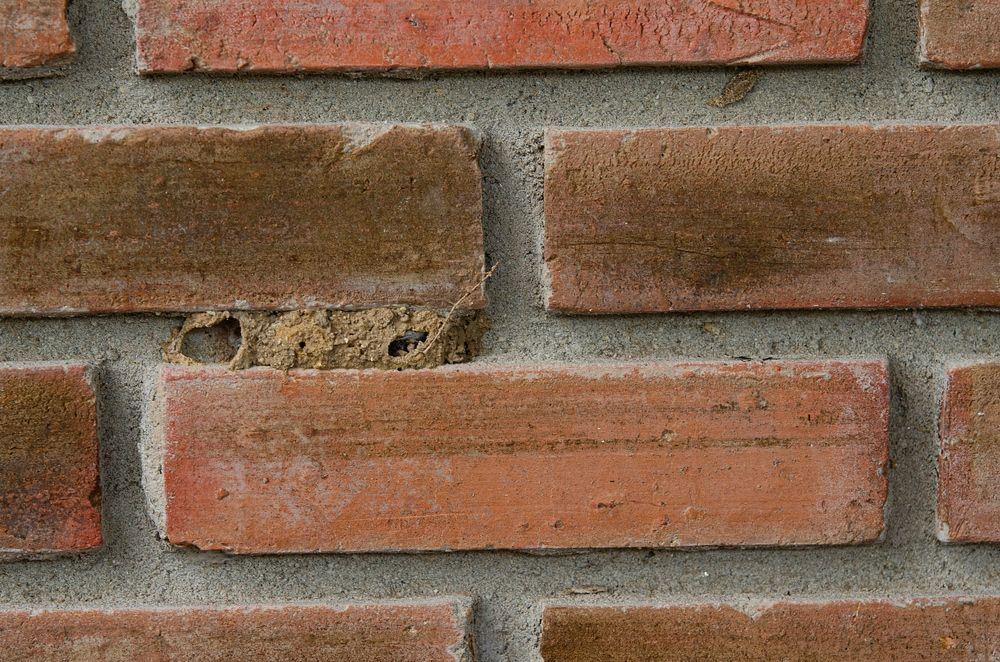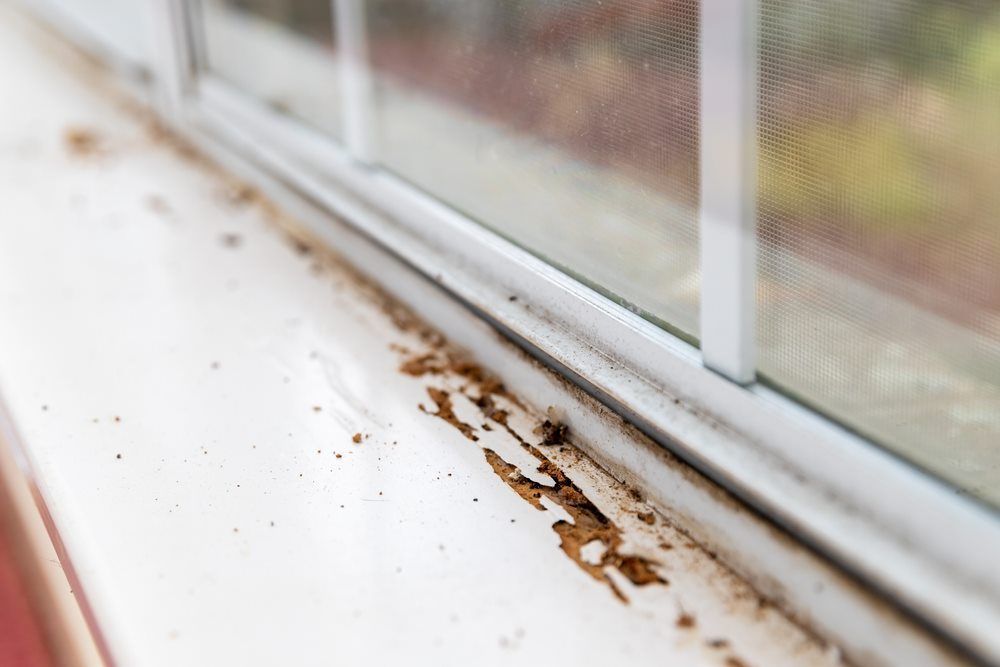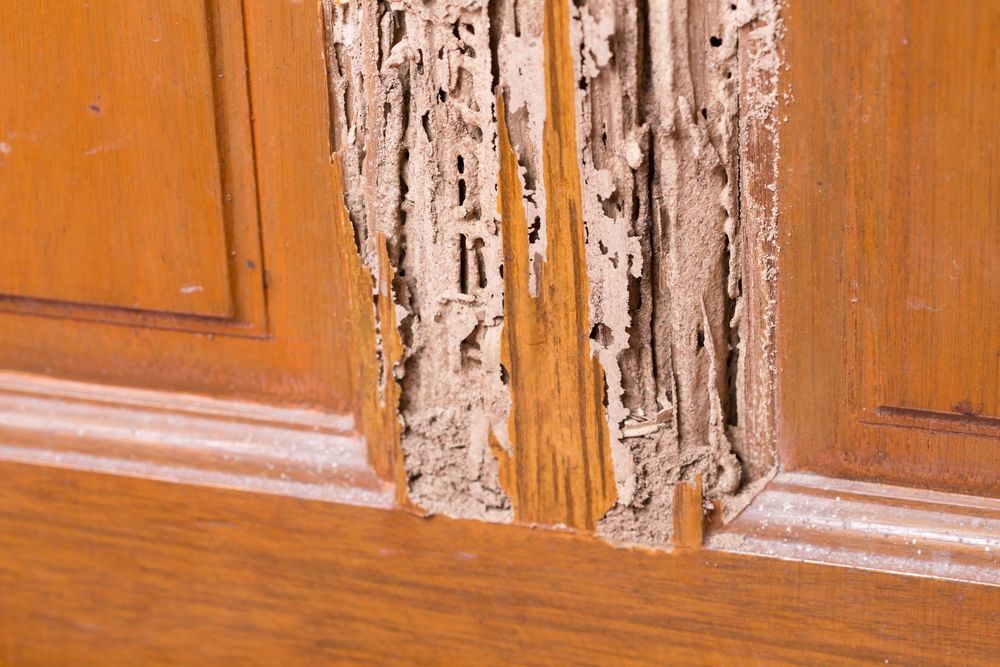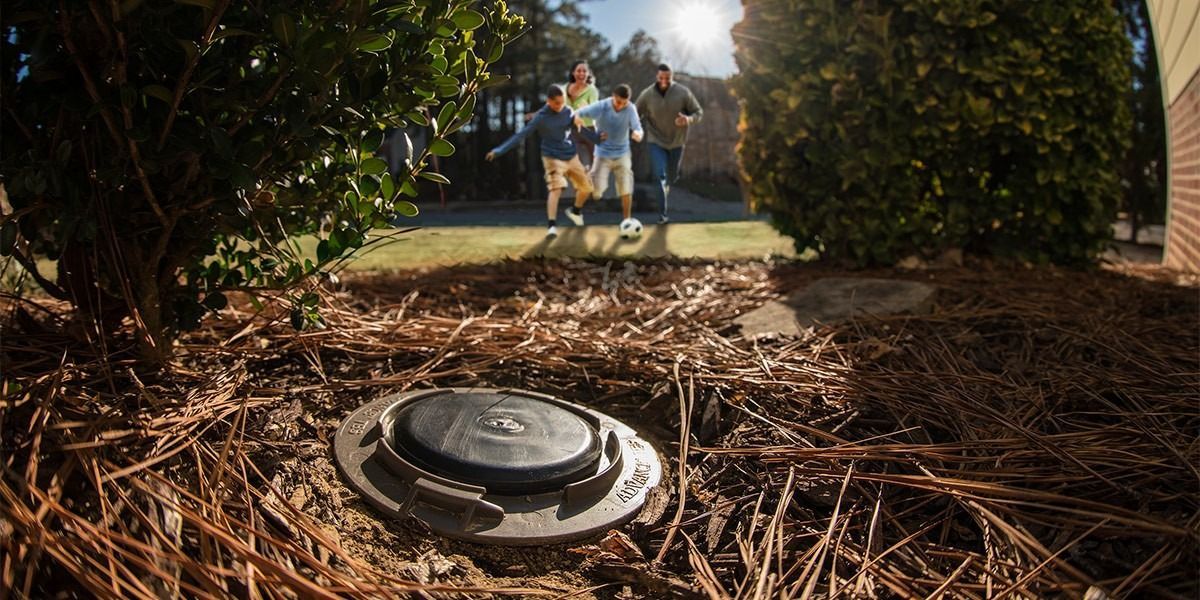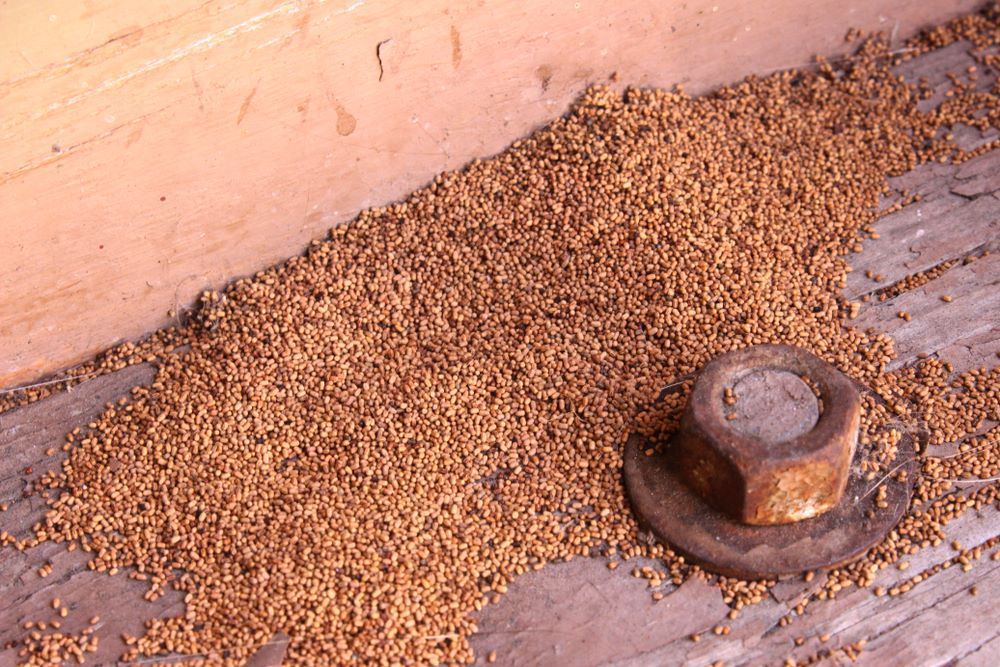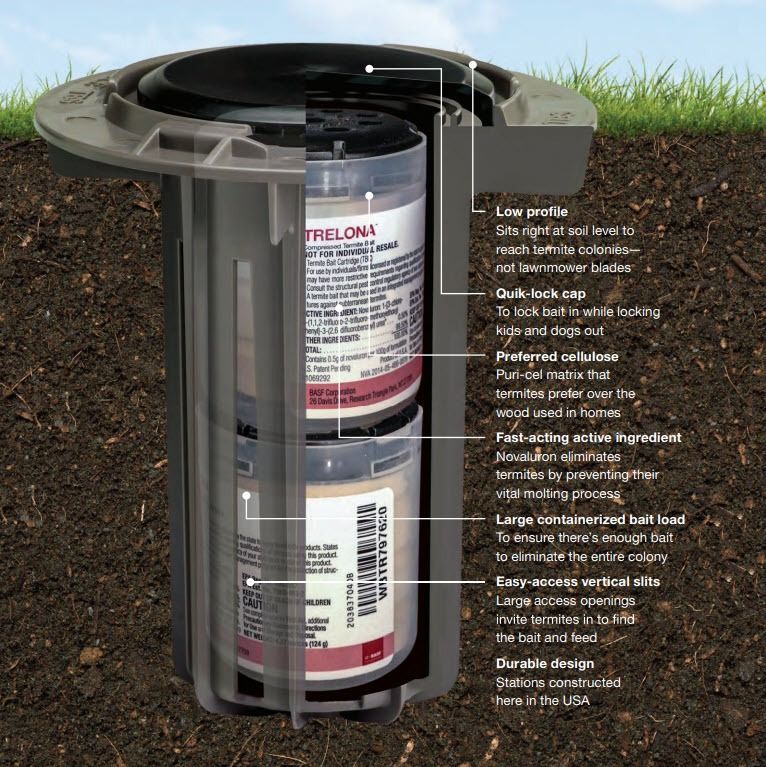Termite Management Albury
Termite Inspections
Border Pest Control is your
termite inspection and prevention specialists. Our experienced technicians are trained to identify and manage any termite infestation found on residential, rural and commercial properties. We service clients throughout Albury, Wodonga, Corowa, Wangaratta, Griffith, Wagga Wagga and beyond.
Residential & Commercial Termite Management
Utilising the latest equipment in termite detection and control, our technicians will manage termite infestations effectively and quickly. We understand that no two properties are the same, which is why we provide an individualised approach.
Our team will answer any questions you may have and set up an appointment at a time that’s convenient for you. We look forward to giving you peace of mind and ensuring your home or business remains termite-free.
All work is guaranteed, and we offer free quotes. Get in touch with our fully licensed and insured technicians today to book.
Termite Baiting
The Trelona® ATBS has been developed by leading brand Termidor in order to provide a tailored approach for each Australian home. This termite bait system provides:
- A discreet bait station that’s used to encourage termite feeding
- A system that can be used as an active & monitoring system, giving your property protection
- A top of the line bait matrix that’s irresistible to termites
Chemical Barriers
It is estimated that as many as 1 in 3 properties in Australia are affected in some way by termites. We use a number of effective chemical agents, including Termidor, which is the world’s most effective termite management chemical. Termidor works by being undetectable to termites. This ensures they are not able to avoid the treated zone.
Contact the experts at Border Pest Control today to see how we can help you.
Termite Information
Termites pose significant risks to a property. Here’s the critical information you need to assess whether you have an infestation and how to resolve it quickly.
What Do Termites Sound Like?
Termites can be surprisingly loud for such small insects. If you have termites, you might hear a clicking or tapping sound. Termites make these noises to communicate with the colony if they’ve been disturbed or threatened and to stay protected while feeding.
Get a detailed assessment of your property with expert
termite inspections. Detect early signs of activity, receive a full report with recommendations and take proactive steps to protect your home or investment long-term.
Termite Treatment
Choose the right
termite solution based on property risk and infestation level. Termidor and Trelona systems are applied for maximum colony control, with long-term monitoring and minimal disruption to your home or business.
Pre-Construction Termite Control
Install proactive termite barriers before
construction begins. From treated films to chemical zones, these solutions are designed to protect new builds and extensions from structural damage caused by hidden termite activity.
5 Signs of a Termite Infestation
1. Termite Wings
After termite swarmers—the reproducers within a termite colony—leave their colony and find a mate, they shed their wings.
Swarmers tend to be attracted to light, so you’ll most likely find them around your doors and windows. As they don’t live long indoors, you might find dead bodies or discarded wings in these areas.
These are both signs you have an active infestation.
2. Termite Droppings
Termite droppings, or ‘frass', are produced as termites digest wood and send it out of the colony to prevent build-up. Drywood termites, which are located in coastal regions, are the only variety to produce visible frass. It looks like pellets and is wood-coloured, so might be confused with wood shavings or dust. If you notice frass, you have an infestation in your property.
Subterranean termites, on the other hand, use droppings to build mud tunnels. Also known as ‘white ants’, they’re common throughout mainland Australia.
3. Termite Damage on Walls
As termites feed on the cardboard or wood panelling beneath your walls, they create tunnels (‘termite galleries’) and small pin holes ('exit holes'). You might think this damage is always easy to spot, but sometimes galleries and holes can be created without any obvious disturbance to your paint or wallpaper—meaning you’re more likely to detect termite damage when conducting a repair or home renovation.
If you do notice a change in the way your wallpaper or paint job looks, you might have termites. Inspect the area for any unusual holes, paint bubbles, discolouration, buckling, sunken winding lines or indentation.
4. Mud Tubes
Another sign of termites is mud tubes. These appear as narrow veins which run down the sides of your home from the ground towards exposed wood sections.
Mud tubes are used by termites to protect themselves from the dry air. They’re particularly useful for subterranean termites, who dry out quickly thanks to their thin exoskeletons. Mud tubes offer the humid, safe environment they need to search for food and to thrive.
If the mud tube contains live termites, you have an active infestation. If it doesn’t, you could still have termites on your property, so it’s important to stay on the lookout.
5. Stuck Windows/Doors
If you have a door or window that's stuck or hard to move, you might have a termite infestation. Termites are drawn to exposed wood on windows and doorframes, and as they feed on them they can cause the wood to warp. Damage could also lead to structural issues in your homes, such as deteriorating baseboards or collapsing floors and ceilings. As there are many potential causes of structural problems, look out for damaged wood or dirt tunnels to confirm an infestation.
Hearing or seeing any of these above signs? Book a termite inspection today!
Safe & Effective Termite Treatment in Albury
Border Pest Control offers premium termite treatments in Albury. After we’ve conducted an inspection of your property, we’ll outline the best solution to help get the infestation under control. We can also help prevent termites from reappearing on your property with our quality products and state of the art technology, which are completely safe for use.
Our professional technicians are experienced in identifying and managing termite infestations of all kinds. We provide our services to all clients, whether you’re based on a residential, commercial or rural property.
Termite Treatment Process
Border Pest Control has a range of treatments available, and the one we recommend for your situation will depend on the species of termite, the severity of the infestation and the stage it has got to. This individualised approach will ensure the treatment works; we often find that a one-size-fits-all approach simply isn’t effective. This is incredibly important because of the level of damage termites can incur on your property if not dealt with appropriately.
In terms of treatments, we recommend Termidor or Trelona. Termidor is the most well-known and used termiticide because it is undetectable by the termites, meaning they consume it and spread it throughout their colonies. Trelona is a newer product with a clever system that can be activated once termite activity has been monitored. Your pest technician can help you choose the best treatment and method for you.
Termidor & Trelona
Termites are incredibly destructive, causing over 1 billion dollars of damage annually in Australia alone. Once you realise you have termites, it can already be too late and there may be extreme structural issues. There are a number of termite treatments, but we recommend either Termidor or Trelona.
Termidor
Termidor has been in use in Australia since 2002, meaning it’s a trusted product. Termidor has a few advantages over the older products.
For one, older products which are applied into the soil are detectable by termites. This means that they will not disrupt the soil and come into contact with the products. Termidor, on the other hand, is not detectable by termites, so they will consume it.
Termidor also kills termites through two different methods: consumption and contact. Because termites cannot detect Termidor, they will return to the nest with the product on them. Because they are social creatures, they will come into contact with other termites, further distributing the Termidor.
You may be concerned that Termidor may be causing harm to other beneficial insects and microorganisms in the soil, but Termidor's unique formulation means it will have no effect on these. Your prize-winning peonies are also totally safe! Termidor is non-toxic and safe to use in all domestic and commercial stations.
Trelona
Trelona is a new product on the market and is setting a new standard in termite control. It contains a new active ingredient, Novaluron, which requires less bait than other competitors to achieve total colony extinction.
Trelona offers two forms of protection: monitoring and “Active on Application”. The monitoring system allows a technician to activate the Trelona system once termite activity is noticed within the bait station.
The active on application system allows bait to be inserted on installation, only needing inspection every 3-6 months. This allows you to feel more safe and comfortable knowing your home is protected with only minimal monitoring required.
Trelona’s novel bait matrices hold up to 248 grams of bait, which are very palatable to termites. They are premixed, which makes them quicker and easier to install.
Trelona can be used in combination with Termidor if you are finding that it is not achieving the desired results alone. This allows you a greater flexibility in protecting you home or business based on your individual needs.
If your infestation is serious, you may need to use a Termidor foam or other Termidor product to ensure that the colony is totally eradicated. This can also be done if you have a high-risk structure.
Trelona and Termidor are both supported by BASF, the leaders in termite control, so both are excellent options for protecting your home or business. Whichever you choose, get in contact with Border Pest Control and we can supply and install your chosen termite protection. Our team is also on hand to offer ongoing support and maintenance so you can relax and enjoy your home with peace of mind.
How to Prevent Termites
There are many methods and products out there designed to prevent termites, but our team can advise you on the best one for your situation.
One main prevention method is termite baiting, using Trelona ATBS from Termidor. These chemicals create a system that is guaranteed to lure the termites away from your home and spread toxins to the colony. Chemical barriers are another effective option, creating a defence around your home and preventing termites from getting to the timber and destroying the structural integrity of the property.
Frequently Asked Questions
How often does a house need a termite inspection?
Regular inspections are key to early termite detection and preventing costly repairs. It is generally recommended to book a professional termite inspection at least once a year. However, properties located in high-risk areas, including Albury’s more humid or wooded zones, may benefit from inspections every six months. Regular monitoring helps identify vulnerabilities early, giving homeowners the opportunity to act before a small problem becomes a major infestation.
What happens after treating for termites?
After treating the termites, Border Pest Control will come out and re-inspect the property in approximately 4 weeks to ensure the property is termite-free. Depending on what treatment you require, annual inspections may be required to ensure your warranty is maintained.
How long does it take to kill termites?
The timeframe for termite treatment varies depending on the severity of the infestation, the size of the property, and the treatment method selected. In many cases, initial treatment can be completed within a few hours. However, some systems, such as termite baiting, involve monitoring stations and may take several weeks or months to achieve full colony elimination. Follow-up inspections are usually recommended to confirm that the treatment has been successful and to monitor any ongoing termite activity.
What time of day are termites most active?
Termites swarm at night and are generally at their peak in autumn. Speak with one of our Border Pest Control staff today for more information.
Why choose Border Pest Control’s termite treatment services?
We are known for our comprehensive and effective treatment strategies prioritising environmental safety. Our team uses the latest technology and adheres to best practices, ensuring that termite issues are resolved. We customise our services to meet the specific needs of your property, providing targeted and efficient termite eradication. Moreover, our proven track record of customer satisfaction and lasting results demonstrates our commitment to excellence in termite management.
What is a termite management plan?
A termite management plan is a strategic and ongoing programme designed to protect a property from termites. The plan involves an initial assessment to identify potential risks and signs of termite activity, followed by the implementation of appropriate treatment options to eliminate any existing termites. Regular monitoring and maintenance are integral components of the plan, helping to prevent future infestations.
What are the signs of a termite infestation?
Termites are often called ‘silent destroyers’ because they can cause significant damage without immediate signs. Common indicators include hollow-sounding wood, sagging floors, doors or windows that stick, blistered paint resembling water damage, small holes in plaster or timber, and mud tubes running along walls, stumps, or foundation areas. You may also spot discarded wings near windowsills or doorways. If any of these signs are present, it is important to arrange a termite inspection without delay to prevent further damage.
What types of termite treatments are available?
Various termite treatments cater to different types of infestations and property layouts. Our treatments range from liquid termiticides, which create a chemical barrier around the property, to baiting systems that use a less invasive method to eliminate termite colonies. Each method is selected based on the property’s specific needs and the infestation’s severity, ensuring the most effective and sustainable termite management strategy is employed.
Are termite treatments safe for pets and children?
Safety is a primary concern when it comes to termite treatments, particularly when it comes to treatments that might affect pets and children. Our termite management solutions are selected and applied with strict adherence to safety guidelines to minimise any risk to your family and pets. All products used are registered and approved by relevant authorities and our technicians are trained to handle and apply treatments to maximise safety and efficacy.
What is the difference between baiting and liquid treatments?
Baiting and liquid treatments are two effective termite management methods, each with distinct advantages. Baiting systems use bait stations filled with a slow-acting termiticide to attract termites, transporting the poison back to their colony and gradually eliminating it. This method is less intrusive and allows for ongoing monitoring of termite activity. On the other hand, liquid treatments involve applying a termiticide barrier around or beneath the property to prevent termite entry immediately. While baiting focuses on long-term colony eradication, liquid treatments provide rapid protection by establishing a chemical barrier that termites cannot penetrate.
How effective are chemical barriers against termites?
Chemical barriers are one of the most popular and proven methods of termite protection. When professionally installed, they create a treated zone around the perimeter of the property, preventing termites from entering undetected. The chemicals used are designed to be slow-acting, allowing termites to transfer the treatment back to the colony, thus achieving broader elimination. For chemical barriers to remain effective over the years, regular inspections and maintenance are recommended to detect any breaches caused by soil movement or landscaping changes.
What is the difference between a chemical barrier and baiting systems?
Both chemical barriers and baiting systems are effective methods for termite management, but they work in different ways. A chemical barrier acts as a continuous shield around a property, blocking and killing termites attempting to cross it. In contrast, baiting systems use strategically placed stations containing treated bait to attract foraging termites. The bait is carried back to the nest, gradually affecting the entire colony. Chemical barriers are often a more immediate solution, while baiting systems are ideal for properties where barrier installation may not be practical.
Why is professional pest control in Albury better than DIY methods?
Professional pest control offers several advantages over DIY approaches. Licensed technicians have access to more effective products and are trained to identify the hidden signs of termite activity that are easy to miss. They can tailor treatment plans to suit the specific layout and risk factors of your property. DIY products may provide temporary relief but often fail to eliminate the colony. Engaging a professional pest control service in Albury gives you a more thorough, targeted, and long-term solution for termite management.
What is the importance of preventive termite treatment in Albury?
Preventive termite treatment plays a crucial role in protecting properties from termite attacks before they occur. In areas like Albury, where termite activity is relatively high, early intervention is key. Preventive treatments, such as installing chemical barriers or baiting systems during construction or around existing structures, create a strong defence against future infestations. Preventive measures are often far more cost-effective than repairing termite damage later.
Can termites return after treatment?
While professional termite treatment aims to eliminate active infestations and create a long-lasting protective barrier, termites can return if the barrier is disturbed or the baiting system is not maintained. Environmental changes such as heavy rain, landscaping, or soil shifting can weaken protection over time. This is why ongoing monitoring, regular inspections, and prompt maintenance of termite systems are highly recommended.
What should I expect during a termite inspection in Albury?
During a termite inspection, a licensed pest control technician will carefully assess all accessible areas of your property, including the roof void, subfloor, interior walls, external perimeter, gardens, and fences. They will look for signs of termite activity, moisture issues, or construction faults that may increase termite risk. After the inspection, you will receive a detailed report outlining any findings and recommended treatment or prevention strategies.

